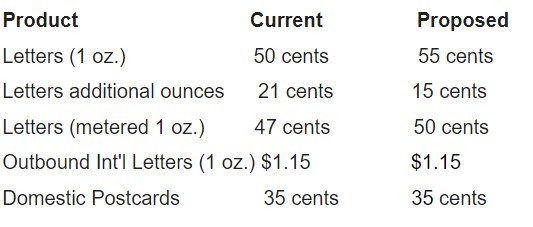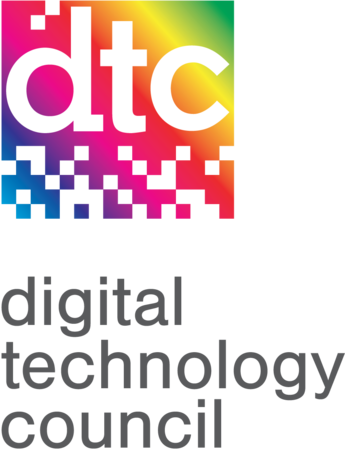10/17/2018
Also in the News...
U.S. Postal Service Announces New Prices for 2019
Source: Mailing Systems Technology, October 10, 2018
WASHINGTON — The United States Postal Service filed notice with the Postal Regulatory Commission (PRC) today of price changes to take effect Jan. 27, 2019.
The proposed prices, approved by the Governors of the Postal Service, would raise Mailing Services product prices approximately 2.5percent. Shipping Services price increases vary by product. For example, Priority Mail Express will increase 3.9 percent and Priority Mail will increase 5.9 percent. Although Mailing Services price increases are based on the Consumer Price Index (CPI), Shipping Services prices are primarily adjusted according to market conditions. The Governors believe these new rates will keep the Postal Service competitive while providing the agency with needed revenue.
If favorably reviewed by the PRC, the new prices will include a 5-cent increase in the price of a First-Class Mail Forever stamp, from 50 cents to 55cents. The single-piece additional ounce price will be reduced to 15 cents, so a 2-ounce stamped letter, such as a typical wedding invitation, will cost less to mail, decreasing from 71 cents to 70 cents.
The proposed Mailing Services price changes include:

Read the full article.
The Digital Technology Council (DTC) continues their series with this webinar:
Think Like a Hacker: Cybersecurity Best Practices - October 24th
When: October 24, 2018 2:00 pm to 3:00 pm
Fee: FREE for Members, Non-members: $39 (Free member rate applies to our Association members also)
Host: Graphic Arts Association, Trevose, PA
Now more than ever there is potential liability that exposes clients when a breach happens. Just like 2017, 2018 has been a record year for data breaches and lost records, and this trend does not seem to be changing. IT security and meeting compliance standards are becoming focal points for many organizations.
Join David Mauro of All Covered IT Services from Konica Minolta to discover best practices and methods to secure and manage your systems as well as how to handle compliance and notice requirements in the event of a data breach.
During the webinar, David will share:
- Why IT Security Matters
- National Trends and Statistics
- Anatomy of a Data Breach
- Creating the Right Culture-Era of Accountability
- Best Practices
- How to Spot a Phish
About the Presenter:
David Mauro is a CIO consultant, strategic planning leader who focuses on guiding clients about IT improvements and security. His goal is to expand the culture of an organization to include IT security as an integral part of one’s culture. A focus is placed on best practices, national trends, and building a common-sense approach to addressing data breaches from popular threats like ransomware, social engineering and phishing. His organization leverages advances in technology to improve IT service models within organizations.
Read more about the webinar or register here or contact your BDD to register you.
 Webinars are a valuable training tool and are provided as a FREE education resource to association members. Popular topics include sales and marketing, implementing social media, and aspects of lean manufacturing. Recordings are also made of these webinars for members who cannot participate in the webinar itself.
Webinars are a valuable training tool and are provided as a FREE education resource to association members. Popular topics include sales and marketing, implementing social media, and aspects of lean manufacturing. Recordings are also made of these webinars for members who cannot participate in the webinar itself.
If you have suggestions for future DTC webinars, contact your BDD or the state office at 888-576-1971. We are interested in learning about your suggestions for future DTC offerings.
To better serve Association members on technology issues, Printing Industries of Ohio • N.Kentucky has partnered with other PIA affiliates to launch a new program – the Digital Technology Council (DTC). The DTC will be the Association's opportunity to address the latest technology in our industry to ensure that members have access to new, exciting tools and resources helping to shape the future of print.
Security in the Office: 6 Tips for a Secure Fall Clean-Out
Source: Shred-it, October 16, 2018
If you believe fall is the best time to get organized, you're not alone. At home, kids have started a new school year, but it also makes sense in the workplace because many businesses are still ramping up after the summer slowdown, and even planning for the following year.
While a clean, decluttered office has been shown to improve employee health, happiness, and efficiency, another significant benefit is improving the data security in the office.
In open concept workplaces, sensitive information is often left out in the open and within easy reach. Even in traditional office settings, piles of files and work-related data sitting out on desks, stacked in hallways, and stored on hard drives, can put confidential data at risk to insider fraudsters and other information thieves.
Security in the office must be considered during a clean up. Here are 6 important aspects of cleaning out the office – and protecting confidential information.
- SECURITY ASSESSMENT: Awareness is the first step. Before a purge, conduct an information security risk assessment of information processes and people that handle or manage sensitive information in the workplace. The assessment should look at office document security, employee training, off-site document security, as well as document retention and identify the biggest security gaps.
- DOCUMENT RETENTION: All businesses and workplaces are required by law to retain confidential client, employee, and company information for a minimal amount of time. Having a retention schedule as part of the document management process is key to knowing what needs to be kept based on usefulness and legal requirements. Documents should be clearly labeled.
- DATA STORAGE: It is common practice for a workplace to store old data around the office. There should be security protocols in place for storing data in lockable filing cabinets, drawers and offices. Cleaning out that storage is important too. When documents have outlived their purpose, holding onto them puts a company at risk for a security breach and non-compliance with privacy legislation.
- DIGITAL DATA: Computer clean-up is just an important part of office organization. Regularly clear out and refresh digital data to keep devices running smoothly and protect security. Delete unused files and apps, and update software regularly. Institute a computer file organization strategy to make documents accessible and to determine what can be dumped.
- DATA DISPOSAL: Securely dispose of old files, papers and electronics that are no longer needed. Never put confidential information into open recycling or garbage bins. Partner with a document destruction expert that has a secure chain of custody including locked consoles for documents, paper shredding, and hard drive destruction. Securely destroy hard drives and mobile phones as well as external hard drives and USBs, tape drives, embedded flash memory, wearable technology, networking equipment, copiers, and printer hard drives when no longer needed.
- POLICY: To keep the workplace tidy after you clean your office, implement policies that standardize security and clutter-free space such as a Clean Desk Policy. Every time an employee leaves their desk, mobile devices should be locked away or taken. Ensure that desks and surrounding workspaces are clear of papers and clutter.
Start Protecting Your Business
The Printing Industries of Ohio • N.Kentucky Employment Exchange Report
Just a reminder. If you’re looking for new employees for your firm, check out the Association's employment links, including the Job Bank. Job seekers can post their resumes at no cost. Employers can review resumes for free or list their job openings for a small fee.
Check out the Association's Employment links.

